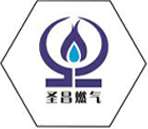
8 月 . 16, 2024 22:36
Back to list
Understanding the Function and Importance of Safety Relief Valves in Industrial Applications
Understanding Safety Relief Valves Importance and Functionality
Safety relief valves (SRVs) play a crucial role in various industries, primarily in maintaining the safety and integrity of pressurized systems. These devices are designed to protect equipment and personnel from the dangers associated with overpressure situations, thereby preventing catastrophic failures that can lead to accidents, damage, and even loss of life.
What Are Safety Relief Valves?
Safety relief valves are mechanical devices used to automatically release excess pressure from a system when it exceeds a predetermined level. They are typically used in steam, gas, and liquid systems within industrial settings, including oil and gas, chemical processing, and power generation. The design of these valves allows them to open and relieve pressure when safety thresholds are breached, and subsequently close once the pressure returns to safe levels.
How Do Safety Relief Valves Work?
The operation of an SRV is based on a straightforward principle. When the pressure in a system rises beyond the set point, a spring-loaded mechanism or a predetermined pressure trigger actuates the valve. The valve opens, allowing excess material—be it gas, steam, or liquid—to escape. This venting process reduces the pressure within the system, ultimately protecting against potential explosions or mechanical failures.
Once the pressure drops back to safe levels, the valve closes again, preventing any further loss of material from the system. It is essential for SRVs to be calibrated accurately to ensure that they react precisely when needed, providing reliable operation under varying conditions.
Importance of Safety Relief Valves
safety relief valve

The significance of SRVs cannot be overstated. They serve as the first line of defense against overpressure scenarios, which can arise due to equipment failure, temperature changes, system blockages, or human error. Without proper pressure relief systems in place, the consequences can be severe—ranging from equipment damage to catastrophic incidents like explosions.
Additionally, safety relief valves are crucial for regulatory compliance. Many industries are governed by strict safety standards that mandate the use of pressure relief devices to protect public safety and the environment. For instance, facilities operating under the American Society of Mechanical Engineers (ASME) guidelines must have SRVs installed as part of their pressure vessel integrity systems.
Challenges and Maintenance
While safety relief valves are vital for operational safety, they are not without challenges. Common issues include corrosion, wear and tear, and the buildup of dirt or debris, all of which can hinder proper valve function. Regular maintenance and testing of SRVs are necessary to ensure their reliability and effectiveness. This includes periodic inspections, cleaning, and recalibration to account for changes in system conditions.
Operators must also be vigilant in choosing the right type of valve for their application. Factors such as the nature of the fluid, pressure range, and environmental conditions play a role in determining the appropriate SRV design. Utilizing the correct valve type will significantly enhance safety and operational efficiency.
Conclusion
In conclusion, safety relief valves are indispensable components in the safe management of pressurized systems. They safeguard against overpressure events and help prevent potentially disastrous outcomes. By understanding their workings, importance, and maintenance needs, industries can ensure a safer working environment for their employees and the surrounding community. As technology continues to evolve, the design and functionality of SRVs will likely improve, further enhancing their role in industrial safety.
Latest news
-
Unlocking The Quality Gas Pressure ReducersNewsNov.01,2024
-
The Role of Gas Pressure Reducing StationsNewsNov.01,2024
-
The Importance and Functionality of Safety Relief ValvesNewsNov.01,2024
-
The Essential Role of Safety Valves in Natural Gas ApplicationsNewsNov.01,2024
-
The Essential Role of Gas Pressure RegulatorsNewsNov.01,2024
-
Enhance Your Premium Gas FiltersNewsNov.01,2024

